Abu Dhabi real estate pivots to green
29 November 2022
| This article is the second in a series that captures key highlights from the Abu Dhabi Real Estate Roundtable jointly held by MEED and Mashreq on 28 September, discussing the trends shaping the way forward for the emirate’s real estate sector. Participants at the closed-door event included government, business and financial stakeholders. |
Tapping into investor demand for sustainable property development could help Abu Dhabi propel its real estate sector to new heights, according to leading industry experts gathered at the Abu Dhabi Real Estate Roundtable.
“Globally, there is a growing call for ESG adoption and sustainable development,” said Anthony Taylor, senior executive officer at Masdar Green REIT, speaking during the high-level discussion organised by MEED and Mashreq on 28 September.
“Investors are increasingly looking for ‘responsible’ investment opportunities and evaluate companies based on specific ESG practices criteria. This highlights the rise in recognition of the climate crisis and how it must be addressed in the real estate industry.
“Now that there is the necessary awareness of the need for climate action, we must continue to take small steps that will have a big impact in the future,” said Taylor.
Growing demand
Stakeholders are already witnessing demand for properties that meet high environmental standards in the emirate.
“To give you an example, Siemens has a global mandate for their office buildings to meet a minimum LEED Gold certification and they chose to base their regional HQ in Masdar City, which is already home to one of the largest clusters of low-carbon buildings in the world,” said Francisco Galan, director at Masdar Green REIT and head of development and portfolio management at Masdar City.
The German multinational’s regional headquarters in Masdar City is the first LEED Platinum-certified office building in Abu Dhabi and one of the first assets acquired by Masdar Green REIT in 2020.
Major decisions, such as headquarter location, highlight again the investor and tenant appetite for sustainable real estate options. The Masdar Green REIT gives investors that option by investing in sustainable income-generating real estate assets, with a primary focus in Masdar City. This REIT also provides a vehicle through which third-party, sustainable developers can monetise their assets, attracting both real estate developers to Masdar City, and aspiring local and international sustainable investors
Francisco Galan, Masdar Green REIT
The demand and supply for sustainable products are interlinked. Demand will drive the creation of the product and vice versa.
“Unless there is change demanded for your product, you will continue to build things the same old way,” said a senior representative from a real estate development company. “It is indicative that people want a certain kind of lifestyle and will commit to projects that support this.”
In January 2022, Abu Dhabi developer Aldar announced The Sustainable City project, to be jointly developed with Diamond Developers at a value of AED1.8bn ($490m).
The community will comprise townhouses, apartments and retail spaces, spanning an area of 397,000 square metres on Yas Island. A core part of the development is its sustainability factor. It will be powered by renewable energy and incorporate practices around energy efficiency, recycling and indoor vertical farming.
Aldar is also the first real estate company in the Middle East and North Africa (Mena) to secure a sustainability-linked loan. In 2021, it signed a five-year AED300m facility with HSBC that connects interest rates payable to achieving sustainability targets.
READ: Key highlights from the first Abu Dhabi Real Estate Roundtable
Positive change
According to stakeholders at the roundtable, the relatively young responsible investing landscape is evolving rapidly. However, there are numerous challenges around the harmonisation and consistency of data, measurement and maintaining high standards in the real estate industry.
Organisations need to start somewhere, and the considerations made today by backing and introducing these priorities in key projects and developments can help create incremental positive change for the future.
Even as demand for sustainable products rises, issues such as upgrading existing properties and a hesitancy to embrace the shift still linger.
“One of the initiatives we have recently introduced in another Dubai property portfolio has been ARC reporting on all assets to highlight, to both tenants and shareholders, some of the lower levels of sustainability these assets are currently achieving,” said Masdar REIT’s Taylor.
He explained that the motivation behind this initiative is to emphasise the need for improvement at both the asset level and, in some cases, tenant behaviour as well.
Retrofitting is another tactic that the government and developers are turning towards as they seek to upgrade existing assets to higher standards.
In a recent announcement, Aldar said it would invest AED25m ($6.8m) to energy retrofit 13 of its residential communities. The investment will offset 19,000 tonnes of carbon dioxide emissions annually and reduce utility consumption by AED12m across the communities.
READ: Retrofit can be a realistic route to net zero
Abu Dhabi’s Mubadala Investment Company has placed responsible investing at the core of its business. Against the backdrop of climate action, the energy transition and the role of business in society, it is continuing to integrate principles of investing responsibly into its decision-making and asset management processes.
To help build fluency and institutionalise ESG, Mubadala has established a dedicated, responsible investing unit to support its business along this journey.
Implementing change is not easy, and getting people on board with green investment strategies can be challenging, given this is a relatively new investment landscape.
Yet industry players state that partnerships can help achieve sustainable value creation while delivering tangible change and positive impact. A call to action is needed and banks can be seen supporting such efforts by confirming their position to finance projects that meet responsible investing criteria.
|
At a glance: Sustainable development in Abu Dhabi National targets For example, the Estidama building design certification system is geared at measuring the environmental performance of built structures from planning all the way through to the decommissioning stage. Within Estidama, the Pearl green building rating system provides minimum criteria that buildings and villas in the emirate must meet from a sustainability aspect. A dedicated Environment Vision 2030 defines five priority areas (climate change; clean air and noise pollution; water resources; biodiversity, habitats and cultural heritage; and waste management) to ensure integration among three key pillars: environmental, economic and social. Abu Dhabi Global Market Keeping in line with national and international demand for sustainability, ADGM has increasingly turned its focus towards green finance practices and supporting ESG-led investments. 2019 saw the launch of the Abu Dhabi Sustainable Finance Declaration by the ADGM. The declaration, supported by over 46 public and private sector entities, aims to increase the quality and depth of green financial products in the emirate, and to create a thriving, sustainable finance industry. In June 2021, Abu Dhabi was ranked fourth-highest in the Mena region and 50th globally on the Global Green Finance Index. Masdar City Masdar City is also home to the International Renewable Energy Agency (Irena) headquarters, a global intergovernmental organisation providing insights and consultancy support regarding energy transition. Stemming from efforts in Masdar City is a green real estate investment trust (REIT), the first of its kind in the region, which directs funds towards sustainable properties within the city. Launched in 2020, the Masdar Green REIT provides investors with responsible investment options. Earlier this year, the REIT signed a financing commitment of a $200m green loan with First Abu Dhabi Bank (FAB) to facilitate portfolio growth. As of December 2021, the REIT’s portfolio was valued at AED980m ($267m), marking a valuation gain of AED32m ($8.7m) over the year. |
Exclusive from Meed
-
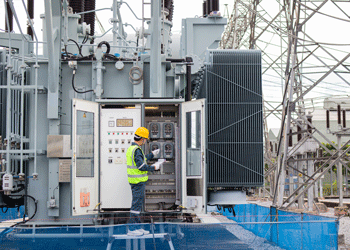 Local firm bids lowest for Kuwait substation deal
Local firm bids lowest for Kuwait substation deal22 December 2025
-
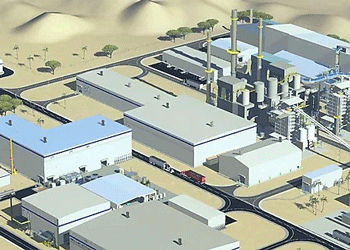 Saudi-Dutch JV awards ‘supercentre’ metals reclamation project
Saudi-Dutch JV awards ‘supercentre’ metals reclamation project22 December 2025
-
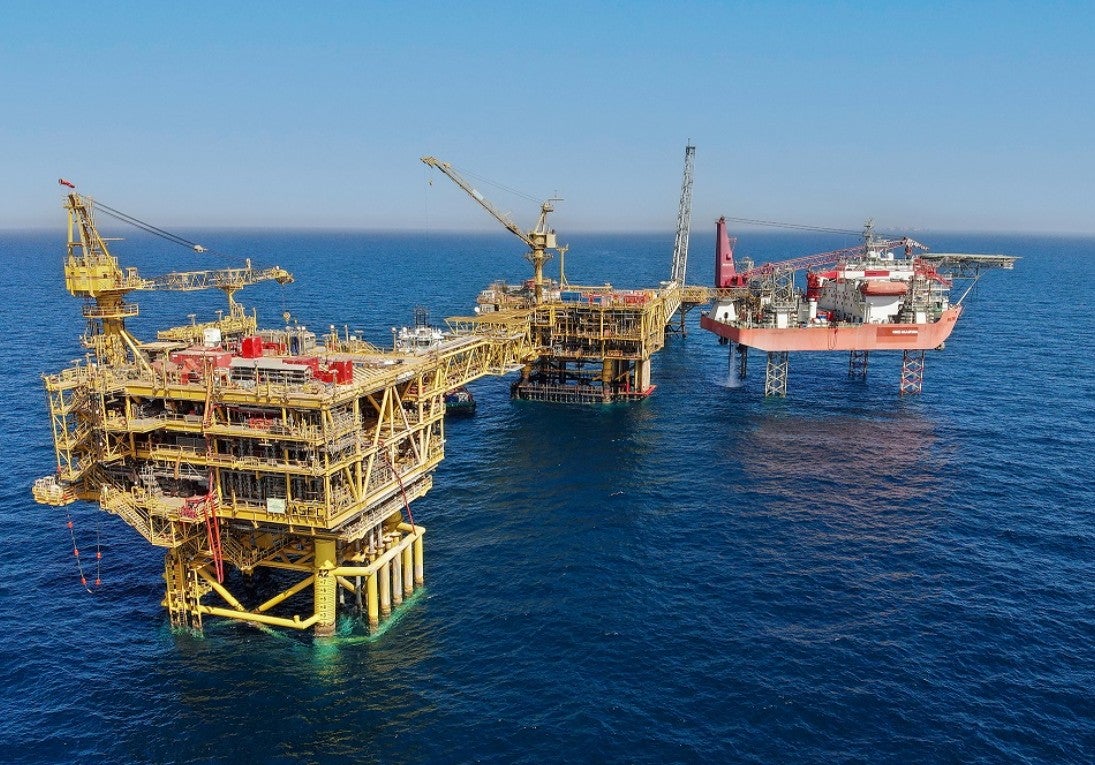 QatarEnergy LNG awards $4bn gas project package
QatarEnergy LNG awards $4bn gas project package22 December 2025
-
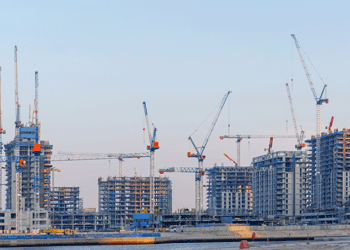 Managing risk in the GCC construction market
Managing risk in the GCC construction market19 December 2025
-
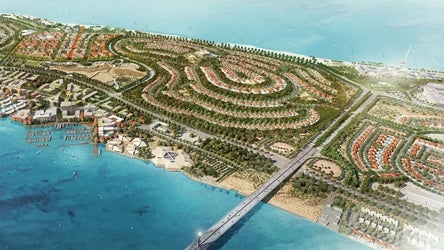 Contractor wins $1.3bn Hudayriyat Island villas deal
Contractor wins $1.3bn Hudayriyat Island villas deal19 December 2025
All of this is only 1% of what MEED.com has to offer
Subscribe now and unlock all the 153,671 articles on MEED.com
- All the latest news, data, and market intelligence across MENA at your fingerprints
- First-hand updates and inside information on projects, clients and competitors that matter to you
- 20 years' archive of information, data, and news for you to access at your convenience
- Strategize to succeed and minimise risks with timely analysis of current and future market trends

Related Articles
-
 Local firm bids lowest for Kuwait substation deal
Local firm bids lowest for Kuwait substation deal22 December 2025
The local Al-Ahleia Switchgear Company has submitted the lowest price of KD33.9m ($110.3m) for a contract to build a 400/132/11 kV substation at the South Surra township for Kuwait’s Public Authority for Housing Welfare (PAHW).
The bid was marginally lower than the two other offers of KD35.1m and KD35.5m submitted respectively by Saudi Arabia’s National Contracting Company (NCC) and India’s Larsen & Toubro.
PAHW is expected to take about three months to evaluate the prices before selecting the successful contractor.
The project is one of several transmission and distribution projects either out to bid or recently awarded by Kuwait’s main affordable housing client.
This year alone, it has awarded two contracts worth more than $100m for cable works at its 1Z, 2Z, 3Z and 4Z 400kV substations at Al-Istiqlal City, and two deals totalling just under $280m for the construction of seven 132/11kV substations in the same township.
Most recently, it has tendered two contracts to build seven 132/11kV main substations at its affordable housing project, west of Kuwait City. The bid deadline for the two deals covering the MS-01 through to MS-08 substations is 8 January.
https://image.digitalinsightresearch.in/uploads/NewsArticle/15305745/main.gif -
 Saudi-Dutch JV awards ‘supercentre’ metals reclamation project
Saudi-Dutch JV awards ‘supercentre’ metals reclamation project22 December 2025
The local Advanced Circular Materials Company (ACMC), a joint venture of the Netherlands-based Shell & AMG Recycling BV (SARBV) and local firm United Company for Industry (UCI), has awarded the engineering, procurement and construction (EPC) contract for the first phase of its $500m-plus metals reclamation complex in Jubail.
The contract, estimated to be worth in excess of $200m, was won by China TianChen Engineering Corporation (TCC), a subsidiary of China National Chemical Engineering Company (CNCEC), following the issue of the tender in July 2024.
Under the terms of the deal, TCC will process gasification ash generated at Saudi Aramco’s Jizan refining complex on the Red Sea coast to produce battery-grade vanadium oxide and vanadium electrolyte for vanadium redox flow batteries. AMG will provide the licensed technology required for the production process.
The works are the first of four planned phases at the catalyst and gasification ash recycling ‘Supercentre’, which is located at the PlasChem Park in Jubail Industrial City 2 alongside the Sadara integrated refining and petrochemical complex.
Phase 2 will expand the facility to process spent catalysts from heavy oil upgrading facilities to produce ferrovanadium for the steel industry and/or additional battery-grade vanadium oxide.
Phase 3 involves installing a manufacturing facility for residue-upgrading catalysts.
In the fourth phase, a vanadium electrolyte production plant will be developed.
The developers expect a total reduction of 3.6 million metric tonnes of carbon dioxide emissions a year when the four phases of the project are commissioned.
SARBV first announced its intention to build a metal reclamation and catalyst manufacturing facility in Saudi Arabia in November 2019. The kingdom’s Ministry of Investment, then known as the Saudi Arabian General Investment Authority (Sagia), supported the project.
In July 2022, SARBV and UCI signed the agreement to formalise their joint venture and build the proposed facility.
The project has received support from Saudi Aramco’s Namaat industrial investment programme. Aramco, at the time, also signed an agreement with the joint venture to offtake vanadium-bearing gasification ash from its Jizan refining complex.
Photo credit: SARBV
https://image.digitalinsightresearch.in/uploads/NewsArticle/15305326/main.gif -
 QatarEnergy LNG awards $4bn gas project package
QatarEnergy LNG awards $4bn gas project package22 December 2025
QatarEnergy LNG, a subsidiary of state-owned QatarEnergy, has awarded the main engineering, procurement, construction and installation (EPCI) contract for a major package for the second phase of its North Field Production Sustainability (NFPS) project.A consortium comprising the Italian contractor Saipem and state-owned China Offshore Oil Engineering Company (COOEC) has secured the EPCI contract for the COMP5 package. The contract value is $4bn, with Saipem declaring its share to be worth $3.1bn.
Milan-headquartered Saipem said the contract will run for about five years. The scope of work comprises engineering, procurement, fabrication and installation of two compression complexes, each including a compression platform, a living quarters platform, a flare platform supporting the gas combustion system, and the related interconnecting bridges. Each complex will have a total weight of about 68,000 tonnes.
Offshore installation operations will be carried out by Saipem’s De He construction vessel in 2029 and 2030.
MEED previously reported that the following contractors submitted bids for the NFPS phase two COMP5 package:
- Larsen & Toubro Energy Hydrocarbon (India)
- McDermott (US)
- Saipem/China Offshore Oil Engineering Company (Italy/China)
QatarEnergy LNG, formerly Qatargas, is said to have issued the tender for the NFPS phase two COMP5 package in the first quarter of the year.
Contractors submitted technical bids for the COMP5 package in late June, while commercial bids were submitted by 8 October, as per sources.
Based upon initial evaluation of bids by QatarEnergy LNG, L&TEH has emerged as the lowest bidder for the COMP5 package, followed by McDermott, with the consortium of Saipem and COOEC in third place, MEED reported in late October.
In the weeks following that, the project operator is said to have engaged all bidders for a final round of negotiations, during which the consortium of Saipem and COOEC is believed to have “clinched the deal”, according to sources.
The detailed scope of work on the COMP5 package covers the EPCI work on the following:
- Two gas compression platforms, each weighing 30,000-35,000 tonnes, plus jacket
- Two living quarters platforms, plus jacket
- Two gas flare platforms, plus jacket
- Brownfield modification work at two complexes
NFPS scheme
QatarEnergy’s North Field liquefied natural gas (LNG) expansion programme requires the state enterprise to pump large volumes of gas from the North Field offshore reserve to feed the three phases of the estimated $40bn-plus programme.
QatarEnergy has already invested billions of dollars in engineering, procurement and construction works on the two phases of the NFPS project, which aims to maintain steady gas feedstock for the North Field LNG expansion phases.
The second NFPS phase will mainly involve building gas compression facilities to sustain and gradually increase gas production from Qatar’s offshore North Field gas reserve over the long term.
Saipem has been the most successful contractor on the second NFPS phase, securing work worth a total of $8.5bn.
QatarEnergy LNG awarded Saipem a $4.5bn order in October 2022 to build and install gas compression facilities. The main scope of work on the package, which is known as EPCI 2, covers two large gas compression complexes that will comprise decks, jackets, topsides, interconnecting bridges, flare platforms, living quarters and interface modules.
The gas compression complexes – CP65 and CP75 – will weigh 62,000 tonnes and 63,000 tonnes, respectively, and will be the largest fixed steel jacket compression platforms ever built.
Following that, Saipem won combined packages COMP3A and COMP3B of the NFPS project’s second phase in September last year.
The scope of work on the combined packages encompasses the EPCI of a total of six platforms, approximately 100 kilometres (km) of corrosion resistance alloy rigid subsea pipelines of 28-inches and 24-inches diameter, 100km of subsea composite cables, 150km of fibre optic cables and several other subsea units.
Separately, QatarEnergy LNG awarded McDermott the contract for the NFPS second phase package known as EPCI 1, or COMP1, in July 2023. The scope of work on the estimated $1bn-plus contract is to install a subsea gas pipeline network at the North Field gas development.
In March this year, India’s Larsen & Toubro Energy Hydrocarbon (LTEH) won the main contract for the combined 4A and 4B package, which is the fourth package of the second phase of the NFPS project and is estimated to be valued at $4bn-$5bn.
The main scope of work on the package is the EPCI of two large gas compression systems that will be known as CP8S and CP4N, each weighing 25,000-35,000 tonnes. The contract scope also includes compression platforms, flare gas platforms and other associated structures.
LTHE sub-contracted detailed engineering and design works on the combined 4A and 4B package to French contractor Technip Energies.
NFPS first phase
Saipem is also executing the EPCI works on the entire first phase of the NFPS project, which consists of two main packages.
Through the first phase of the NFPS scheme, QatarEnergy LNG aims to increase the early gas field production capacity of the North Field offshore development to 110 million tonnes a year.
QatarEnergy LNG awarded Saipem the contract for the EPCI package in February 2021. The package is the larger of the two NFPS phase one packages and has a value of $1.7bn.
Saipem’s scope of work on the EPCI package encompasses building several offshore facilities for extracting and transporting natural gas, including platforms, supporting and connecting structures, subsea cables and anti-corrosion internally clad pipelines.
The scope of work also includes decommissioning a pipeline and other significant modifications to existing offshore facilities.
In addition, in April 2021, QatarEnergy LNG awarded Saipem two options for additional work within the EPCI package, worth about $350m.
QatarEnergy LNG awarded Saipem the second package of the NFPS phase one project, estimated to be worth $1bn, in March 2021.
Saipem’s scope of work on the package, which is known as EPCL, mainly covers installing three offshore export trunklines running almost 300km from their respective offshore platforms to the QatarEnergy LNG north and south plants located in Ras Laffan Industrial City.
Saipem performed the front-end engineering and design work on the main production package of the first phase of the NFPS as part of a $20m contract that it was awarded in January 2019. This provided a competitive advantage to the Italian contractor in its bid to win the package.
https://image.digitalinsightresearch.in/uploads/NewsArticle/15305330/main2239.jpg -
 Managing risk in the GCC construction market
Managing risk in the GCC construction market19 December 2025

The scale and complexity of construction projects under way in the GCC region has attracted global attention. And while large-scale project announcements continue to dominate the headlines, the underlying risks – insufficient financing, harsh contract clauses and a tendency to delay dispute resolution – are often overlooked.
Around the region, many contractors are experiencing difficulties once projects have started because they mistakenly believe they have the necessary in-house skillsets to navigate these complex issues.
MEED has convened a panel of construction consultants and specialists to develop a checklist to help contractors and subcontractors operating in the region to navigate the market’s challenges as the sector moves into 2026.
The proactive steps are aimed at positioning a company so that it can maximise recovery and mitigate threats posed by unresolved claims and poor commercial or contractual administration.
Systemic risk
The regional market is characterised by several systemic issues that amplify risks for contractors.
The fundamental problem is finance. Projects frequently suffer because they are not fully financed from the start, which places financial strain on contractors. This problem is then compounded by the region’s traditional contractual environment, which means disputes are typically not finalised until well after jobs have been completed, creating cash flow problems for contractors, particularly near the end of such projects.
Further financial strain is created by unconditional performance guarantees and retention. The combined requirement for advance payment bonds, a 10% performance bond and sometimes 5%-10% retention represents a significant draw on contractors’ cash flow. The growing tendency of employers to pull bonds further exacerbates the situation.
Many contractors sign up to one-sided contracts so as to secure more work, rather than challenging their employers. Key contractual issues include:
> Unrealistic timelines: Contractors set themselves up to fail by accepting unrealistic timescales on projects, despite the knowledge that the work often takes twice as long.
> Deficient design: A major risk, particularly on high-profile projects, is a lack of specification and design progress. Many contracts, such as the heavily modified Silver Book – a standard contract published by the International Federation of Consulting Engineers (Fidic) for turnkey engineering, procurement and construction projects – presuppose that the contractor has sufficient information to design, build and deliver, even when there is substantive information missing, which renders lump-sum pricing obsolete and inevitably leads to dispute.
> Lowest-bid mentality: Contractors often fail to factor necessary commercial support from legal and claims specialists into their tender figures, making their bid appear more competitive but leaving them without a budget to seek help until it is too late. As a result, projects are managed with budgets that are barely sufficient, rather than being run properly to a successful conclusion.

Supply-chain erosion
The quality and capacity of the subcontractor market, particularly in the mechanical, electrical and plumbing (MEP) field, has eroded significantly.
Some major MEP players have closed or left the market due to underpricing, prompting contractors to call in their performance bonds. This means the region is receiving progressively lower quality for increasingly higher costs, further straining the delivery phase for main contractors.
The risk of subcontractor insolvency is increasing and must now be considered a primary project risk. Contractors should monitor financial health, diversify subcontractor dependencies, challenge allocated resources and secure step-in rights wherever possible.
Many Silver Book contracts in the GCC now include heavily amended, employer-friendly clauses that push design and ground-risk even further onto the contractor – often beyond what Fidic intended. These amendments require careful review and firm pushback.
The GCC remains a market of opportunity, but success in 2026 will belong to contractors that combine disciplined tendering, transparent commercial governance and early issue resolution. Optimism is not a strategy; preparation is.
A 10-point checklist for contractors in 2026
1. Mandate contractual due diligence: Invest time and money into a thorough contract review before signing. Be prepared to challenge harsh clauses, particularly those unfairly allocating risk, such as unknown conditions and full design responsibility. Assume that bespoke rather than standard amendments govern your entitlement. Treat the special conditions as the real contract.
2. Factor commercial support into the budget: Do not omit the cost of essential commercial support from the tender, such as quantity surveyor teams, quantum and delay specialists, legal review and claims preparation. Even if not visible in the front-line figures, this cost – which could be as low as 0.01% of the project value – must be factored in to ensure a budget for early and continuous engagement.
3. Prepare a realistic baseline programme: Stop committing to programmes just to fit the tender. Develop a realistic programme from the start, identifying risks and including necessary code books to track delays early. Consider commissioning an independent programme review at the tender stage – this is common internationally and reduces later arguments about logic, durations and sequencing.
4. Confirm project funding: Ensure that the project financing is fully in position before starting work. Many problems stem from projects that are only partially financed, leading to cash running out near completion. Gone are the days of not asking employers for greater transparency when it comes to funding projects.
5. Establish a strong commercial and claims function: This is where commercial management starts. Set up systems to ensure contractual compliance, including seven-day claim notifications. Variations are inevitable, and proper substantiation is required to secure entitlement – if it is not recorded, it cannot be recovered. Diaries, cost records and notice logs remain the foundation of entitlement.
6. Seek early specialist engagement: Prevention is better than a cure. Bring in specialists early to examine time and cost issues before problems arise. Consultants can provide advice, help set up the correct commercial systems and prevent the escalation of unresolved issues.
7. Adopt an old-school approach to claims management: Technology is useful, but nothing beats resolving issues face to face. Engage directly with the employer’s team regularly to negotiate and agree claims early. This manages the client’s expectations when it comes to budgeting and allows the contractor to secure cash flow sooner. A simple early-warning culture – even when not contractually required – prevents surprises and builds trust with the client.
8. Avoid wasting resources: Focus claims efforts only on events that are actually recoverable and demonstrably critical. Contractors often waste time chasing things that will not be recoverable. Prioritise issues that are both time-critical and clearly fall under the employer’s risk – everything else should be logged but not pursued aggressively.
9. Upskill internal teams: Use specialist involvement as an opportunity to upskill your in-house commercial team. Have them sit alongside specialist consultants to learn proper commercial and contractual administration processes, creating a lasting work-culture benefit.
10. Push for faster dispute resolution: When a dispute arises, advocate for a swift resolution mechanism like adjudication, mediation or expert determination to temporarily resolve cash flow issues. Dispute adjudication boards are intended to give quick, interim decisions. However, if not set up from the start of the project, the process becomes protracted – sometimes taking many months – so fails to provide the cash-flow relief contractors urgently need. Where clients resist adjudication, propose interim binding mediation or expert determinations, or failing this, milestone-based dispute workshops – anything that accelerates getting cash back on site. MEED would like to thank Refki El-Mujtahed of REM Consultant Services (refki@rem-consultant.com; www.rem-consultant.com) for facilitating this article, as well as the following co-contributors:
Aevum Consult | Lawrence Baker | lawrence.baker@aevumconsult.com | www.aevumconsult.com
Decerno Consultancy | Lee Sporle | leesporle@decernoconsultancy.com | www.decernoconsultancy.com
Desimone Consulting | Mark Winrow | Mark.Winrow@de-simone.com | www.de-simone.com
Forttas | Derek O’Reilly & Martin Hall | derek.oreilly@forttas.com & martin.hall@forttas.com | www.forttas.com
IDH Consult | Ian Hedderick | ian.hedderick@idhconsult.com | www.idhconsult.com
White Consulting | Nigel White | nigelwhite@whiteconsulting-me.com | www.whiteconsulting-me.com
https://image.digitalinsightresearch.in/uploads/NewsArticle/15289183/main.gif -
 Contractor wins $1.3bn Hudayriyat Island villas deal
Contractor wins $1.3bn Hudayriyat Island villas deal19 December 2025

UK-headquartered construction firm Innovo Group has won a AED5bn ($1.3bn) contract to build two residential developments, Nawayef East and Nawayef West, on Hudayriyat Island.
Abu Dhabi-based developer Modon Properties awarded the contract.
The scope of the contract includes the construction of 735 three- to eight-bedroom villas.
The Hudayriyat Island masterplan was unveiled in 2023. The integrated development comprises residential communities and other leisure and mixed-use facilities.
The masterplan features 53.5 kilometres (km) of coastline, including 16km of beaches.
Some of the major destinations on Hudayriyat Island include the Velodrome Abu Dhabi, Surf Abu Dhabi, a wide range of sports, commerce and leisure amenities, the largest park in Abu Dhabi and a 220km-long network of cycle tracks.
Project developments
In November 2023, Modon appointed local contractor Trojan General Contracting as the main contractor for the sports hotel, as MEED reported.
Modon also awarded the local National Marine Dredging Company an $803m enabling works contract in April 2023.
Abu Dhabi-based Hilalco completed the construction of mountain bike trails on the island earlier in 2023.
In November 2022, Chinese contractor China Harbour Engineering Company was awarded the main contract for dredging and reclamation works at Hudayriyat Island.
In 2019, Modon appointed the local Wade Adams to undertake the initial landscaping and infrastructure works on the island.
 READ THE DECEMBER 2025 MEED BUSINESS REVIEW – click here to view PDF
READ THE DECEMBER 2025 MEED BUSINESS REVIEW – click here to view PDFProspects widen as Middle East rail projects are delivered; India’s L&T storms up MEED’s EPC contractor ranking; Manama balances growth with fiscal challenges
Distributed to senior decision-makers in the region and around the world, the December 2025 edition of MEED Business Review includes:
> AGENDA 1: Regional rail construction surges ahead> INDUSTRY REPORT 1: Larsen & Toubro climbs EPC contractor ranking> INDUSTRY REPORT 2: Chinese firms expand oil and gas presence> CONSTRUCTION: Aramco Stadium races towards completion> RENEWABLES: UAE moves ahead with $6bn solar and storage project> INTERVIEW: Engie pivots towards renewables projects> BAHRAIN MARKET FOCUS: Manama pursues reform amid strainTo see previous issues of MEED Business Review, please click herehttps://image.digitalinsightresearch.in/uploads/NewsArticle/15289204/main.jpg

